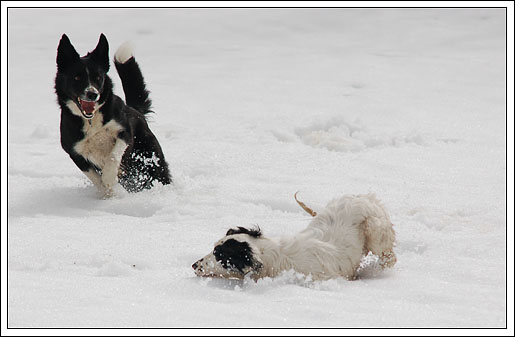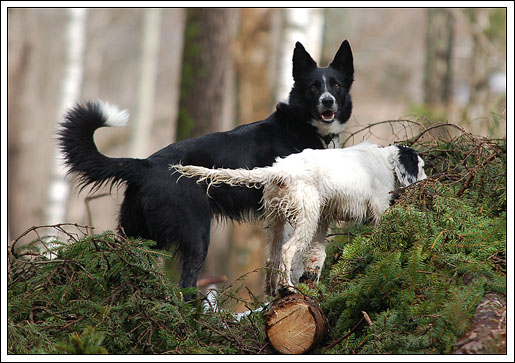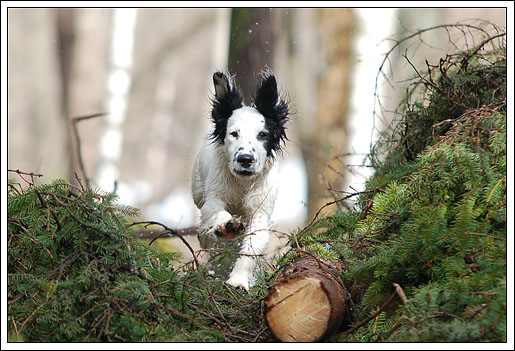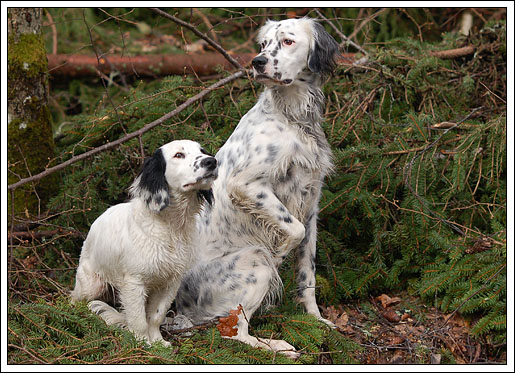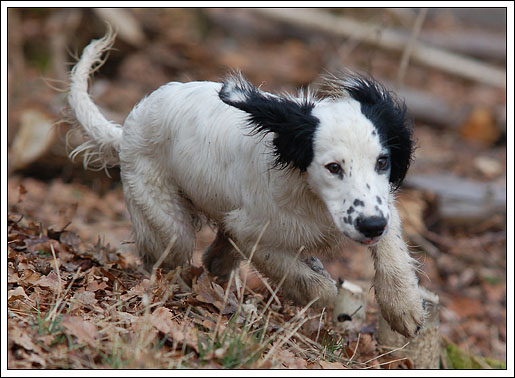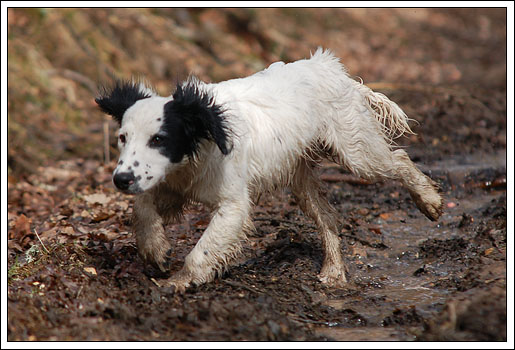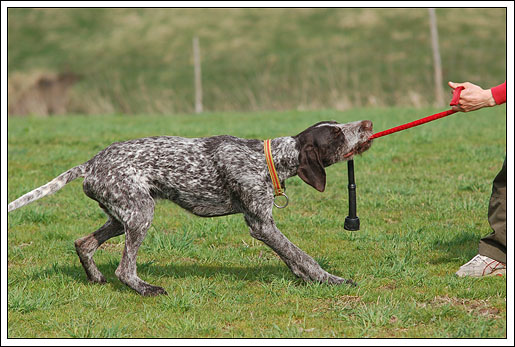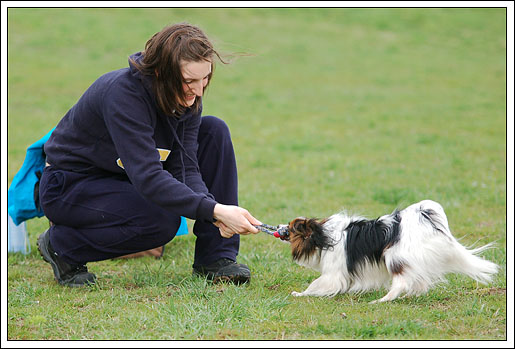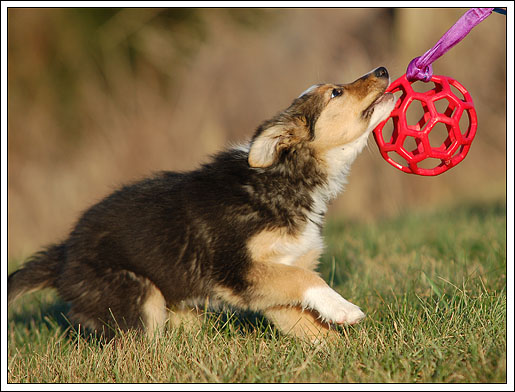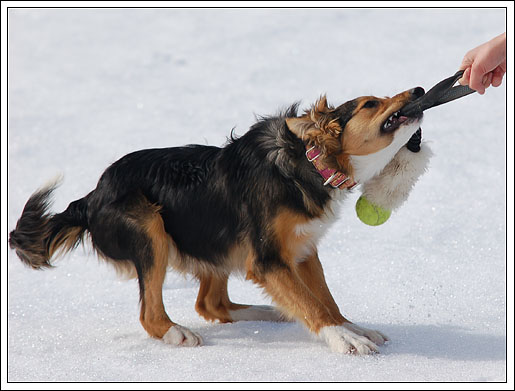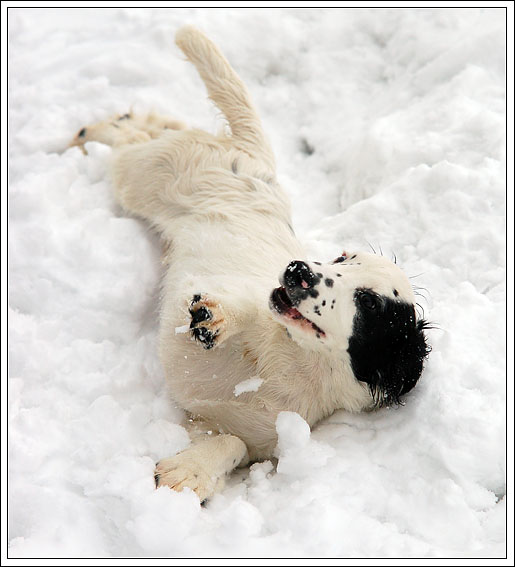
Five things that will improve your training
When we teach seminars, we often start by giving some input on how trainers can have better quality in their training. These are some easy points that often make a huge difference:
1. Use Crate Games
Crate games has made a huge difference in my own training, and an even bigger difference in our classes. The crate games teaches the dog to engage in training, be fast, have self control and to relax. In a training session, crate games provides a perfect start and a perfect end to the session. You can get Susan Garrett’s DVD about Crate Games here.
2. Play a lot of Tug
Play a lot with your dog in training and keep a good balance between treats and tugging in your training. A good rule of thumb is to break it off and play for every third to fifth treat in a session. These breaks will keep your dog in optimum arousal throughout the session, helps with building value for both treats and tugging, helps with your transitions and teaches the dog to alter between play and concentration. It also helps with keeping sessions light and fun for both trainer and dog. Sometimes, we get so into training that the dog gets worried by our serious mood.
3. Keep Your Sessions Short
Trainers often train for way too long. We try to limit our sessions to three minutes (unless we do trial training with the obedience dogs, search and rescue training, or other activities where the dog sometimes has to work for a lot more than 3 minutes before he gets a reward). Any time we’re about to start training a new behavior, we keep sessions even shorter (like one minute), so that we are able to evaluate if our plan is right before doing anything else. We make adjustments to the plan and to a one minute session again. Only when we feel confident that we’re on the right track, we add a few minutes to the sessions. When I do agility with Shejpa (who has had issues with focus and speed), I mostly do 30 second sessions (or shorter). This has really made a huge difference in her speed and focus in agility. The length of a training session is determined by how long the dog is able to work with focus and enthusiasm and by our own need for evaluation and planning. Even if the dog is able to work for long periods of time, it is necessary to stop and evaluate the training often. If not, you might be going in the wrong direction for a long time without noticing.
4. Make Your Transitions More Smooth
Good dog training really has a lot to do with mechanical skills. If you want your dog to be fully focused during training and trialing, you must be fully focused and plan your training so that it is smooth, with no unmotivated breaks. A good training session is focused and active from beginning to end. Three minutes of pure joy and koncentration. This means that you don’t have time to search your pockets for treats, move equipment or walk from one place to another without planning it well. In my shaping sessions, I often keep treats in my hand to be able to reward the dog quickly. Breaking off trainign with a game of tug gives me a chance to pick up some more treats and get ready for a new repetition without any dead time for the dog. As soon as I tell my dog to drop the toy, I am ready to click and reward again. No transportations, no dead time. Plan your transitions, train your transitions, so that your dog can be as attentive as you would like. Send your dog to his crate any time you need to think, get something or talk to a friend or instructor.
5. Evaluate Your Training
A common misstake that dog trainers make is to forget about evaluation and just keep doing the same thing over and over again. There are a lot of things to evaluate after a training session. First: are you better of now than you were when you started? Did your plan work out? Do you need changes to your plan? If the session went bad – when did it go wrong? Did you train for to long? Could your transitions be more smooth? How many treats since your last game of tug? Did you stay for to long on one criteria? Or did you ask too much of the dog? Are you working with two critera at the same time (like training the retrieve and at the same time training the dog to focus during distractions)? What needs to be changed before your next session? What could get better? There are a lot of things to consider. Video recording your sessions can be a great tool. It helps your to evaluate your training from the outside and find new things to get better at. I love this quote by Bob Bailey: Video recording is the greatest invention since the secondary reinforcer.
Here is a video clip of Shejpa and I that might give you some illustration on what you just read:


